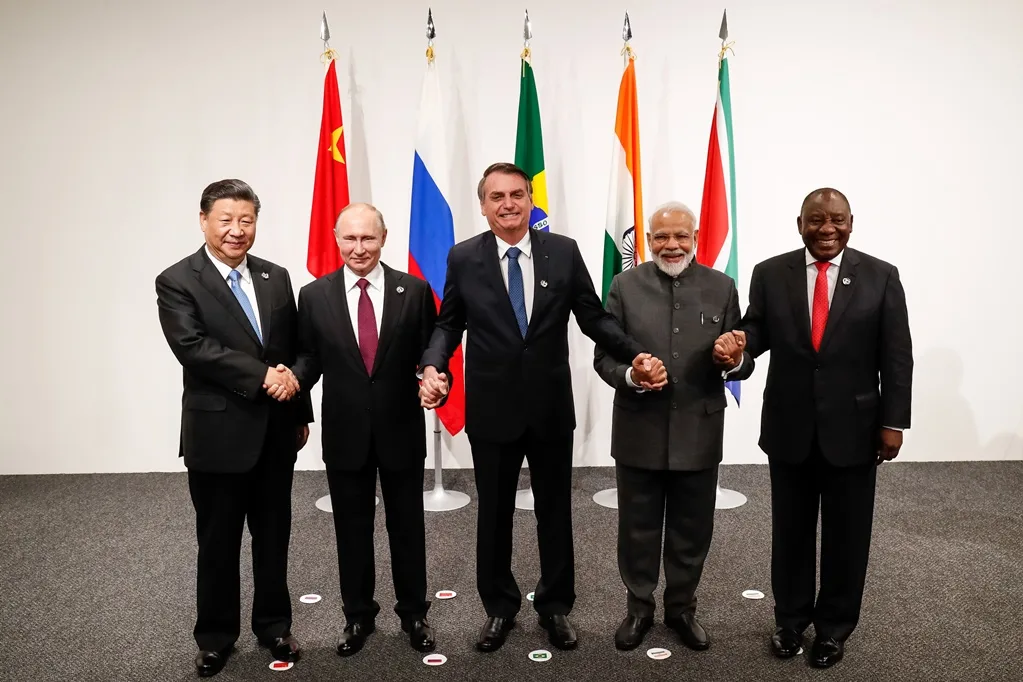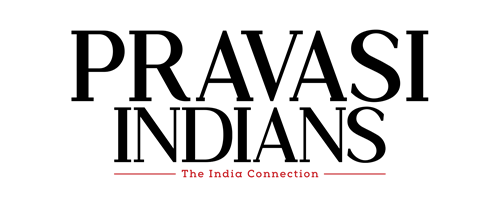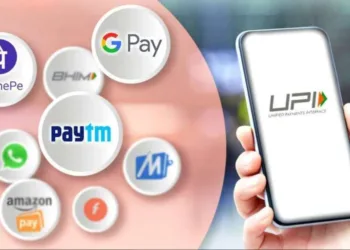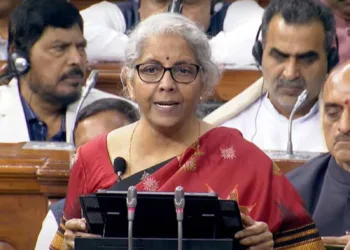As more countries show an inclination to move away from using the US dollar for international trade and other transactions, it’s an opportunity for the Indian rupee to become a globally accepted currency
By Kumud Das
Quite a while back, singer Mika Singh had posted a video from Doha airport while shopping at the Louis Vuitton outlet. “I felt so proud to be able to use Indian rupees whilst shopping at #Doha airport…You can even use rupees in any restaurant…isn’t that wonderful,” he tweeted.
“A massive salute to (PM Narendra Modi) for enabling us to use our money like dollars,” he had added.
With the global economy gradually moving towards de-dollarisation, it provides a fair chance for the Indian rupee (INR) to take over as the globally accepted currency in years to come. It has become the fourth international currency after the dollar, pound and euro to be accepted at currency exchange counters in Doha and Qatar.
International trade in the rupee will help reduce transaction cost for industry and several countries are in discussions with the Reserve Bank of India (RBI) on this, Commerce and Industry Minister Piyush Goyal said recently.

Last year, the RBI and the finance ministry asked the top management of banks and representatives of trade bodies to push export and import transactions in the rupee. They want banks in India to connect with their foreign counterparts for opening special rupee vostro accounts to facilitate cross-border trade in the Indian currency rather than the popular US dollar mode. Goyal said that today several countries are realising that in trade, there is a need for change in currency and it involves a conversion cost, which in turn increases transaction cost.
Thus far the currency world was quite unipolar, with the USD ruling the roost. Now, the emerging markets and quite a few other countries are actively exploring alternatives to the greenback.
These initiatives are bound to gain traction in the days to come for two reasons. One is the self-belief of countries that they can establish a level playing field in world trade. Secondly, the US is headed for, or is already in, recession.
The dollar has been dominant for such a long time that even its allies were quietly but visibly fretting about their dependence on it. The euro was and continues to be an alternative, but has been hobbled by its internal contradictions. The British pound has its own frailties, more so now post-Brexit.
The countries coming together to try and leverage their economic numbers and clout and create alternative channels for payment and settlement are confident and optimistic that this time they will succeed.
M.V. Hariharan, treasury expert and former DGM at State Bank of India (SBI), says, “Exercising the choice to move away from the dollar peg to, say, gold can be a good idea.”
It’s a long haul ahead and a lot of work is to be done by these countries to make their ideas viable and effective. Barter will work too. This will reduce prices and also expand trade. Settlement for oil bills and the determination to use every available avenue to pay for goods and services in alternative currencies with a credible peg will determine how soon and how far these efforts are sustainable.
Unity among the participants is vital since the success of this venture will be beneficial to shared economic and financial interests, Hariharan emphasises.
Urgent need for de-dollarisation
The profound economic disruptions experienced by Iran and, more recently, Russia, after being evicted from dollar-based trading systems like SWIFT has led many nations to consider contingency plans. India and Malaysia have recently begun to conduct trade using the Indian rupee. There have also been perennial warnings about Saudi Arabia and other energy exporters moving away from dollar-denominated trade in oil. China executed a test case trade transaction for natural gas with France in the yuan.
But replacing the currency of the largest economy with that of a smaller economy is not a viable strategy. Moving away from the dollar could throw up substantial barriers to exit as well as network effects to overcome, owing to historical, technological, financial and other obstacles. The US dollar is also the de facto currency of East Timor, Ecuador, El Salvador, the Federal states of Micronesia, the Marshall Islands, Palau, Panama and Zimbabwe.
As many as 22 foreign central banks and currency boards have pegged their currencies to the dollar. It is the cheapest means of access to acquire nominally risk-free US treasury instruments. People are habituated to working with the dollar, so getting away from it will be a difficult and costly affair.
Anil Kumar Bhansali, treasury head, Finrex Treasury Advisors, says, “The replacements being discussed are crypto currencies, central bank digital currencies, basket of commodities which represent a given nation’s or region’s competitive advantage.”
A recent conference in New Delhi involving Russia, China, India and South Africa touched upon a plan to focus on increased cooperation and have a common currency for trade settlement amongst themselves and with certain other nations. This could be termed as Bretton Woods – III.
A side effect of establishing alternative currencies may be decreasing interest in tradable US debt. This could result in US government spends and higher average inflation and/or higher taxes for US citizens, Bhansali pointed out.
Effects of de-dollarisation
According to Bhansali, “In some shape and form, the dollar may continue to be around for a long time but its fate as a de facto currency of the world could have already been sealed. But the size and breadth of the US economy and its vast trading relations, with virtually every trading economy, will ensure that it will remain amongst the top currencies used to denominate and or settle global transactions.”
There are high barriers to exit and high switching costs, and most of the international community, be it individuals, firms, governments or traders, think and trade in dollars. The transformation could take decades. Currencies like the yuan are pegged to the dollar and do not float. So its exchange value is not subject to market forces and this allows the Chinese monetary authorities to adjust its value to benefit exports. The Chinese capital account is also closed. If the dollar were to lose its reserve currency status, neither the dollar nor America as a nation would disappear. The English pound, which was once the world’s reserve currency, still exists. Less global demand for the dollar would result in gradual depreciation of its value to some degree. Mild depreciation would make US exports more attractive to foreign consumers while imports would become costlier. Steep depreciation would result in severe difficulties for producers and consumers. The global demand for US securities would decline and would significantly impact both US fiscal and monetary policies.
Transactions in less liquid currencies will be more inefficient and costly and could bring about more underdeveloped practices and technology than the already established practices of the dollar. But given the increasing use of the dollar to impose sanctions, some foreign powers see the need to develop the capability to transact outside the US dollar-based systems. The Federal Reserve missteps, in particular those which have led to highest inflation in 40 years, are feeding an instinct to develop hedges against US monetary policy. New reserve currency ideas go way back. But recent developments suggest that non-dollar trading relationships are being explicitly pursued. The knock-off effects of changes of this sort, even if developed gradually, may be more far-reaching than anyone can envision.

What is de-dollarisation?
Since 1971, after the collapse of the Bretton Woods agreement, the dollar has been the sole currency in which almost all trade is done. For example, oil and gold and most commodities are traded in dollars. Most currencies are quoted in dollars. In the Middle East, currencies are pegged to the dollar. In a few countries the dollar is the sole currency. Most trade credits are done in the dollar. The dollar has been the dominant currency for the past 50 years. The euro, which came into existence in 2002, has been trying hard to become a global currency but has not been successful for 20 years. The Chinese yuan has also tried to become a global currency since 2010 but has not been successful till date. Discussions for a more politically neutral currency have gone on for decades but nothing concrete has happened. The process of de-dollarisation has begun after the pandemic.
Of late, China and Brazil have reached an agreement for trade in each other’s currencies. Over the past 15 years, China has replaced the US as the main trading partner of Brazil. Being the world’s reserve currency, United States dollar (USD) is essentially the default currency in international trade due to which every central bank keeps a large portion of its foreign exchange holdings in dollars. Since dollar holders want a return on these balances it drives the demand for holding US government bonds/treasury bills in world financial markets.
When more trade begins to be done in currencies other than the dollar, the process is called de-dollarisation. The petro dollar is the biggest trade currency in the world economy but if settlement begins in other currencies, it would be decimated.
(The writer is Associate Professor & Program Head, School of Media & Journalism, DY Patil International University, Pune)








